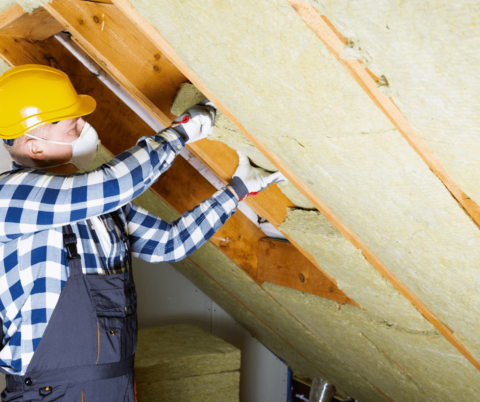Let’s be real, getting your roofing sorted is super important. But, wow, the options out there can make your head spin! It’s basically the superhero of your home, battling rain, snow, and wind to keep you comfy inside.
A solid roof does more than just keep your stuff dry – it’s your MVP for slashing those energy bills, and keeping your place cozy in winter and cool in summer. Thinking about a new spot or jazzing up your current one? Getting the scoop on roofing services is like your secret cheat code to ensure your home stays comfy and dry, no matter what kind of weather, throws a party outside.
In this guide, we’re going to dive into everything roofing – from choosing the right materials to maintenance tips and beyond. This way, you can make smart decisions and keep your home safe and sound.
Types of Roofing Materials You’ll Encounter
When it comes to roofing materials, you have several options to choose from, each with its own set of benefits and drawbacks. Understanding these materials will help you select the best one for your home and climate.
Asphalt Shingles
Asphalt shingles are a big hit when it comes to roofing materials. Why? Well, they’re pretty affordable and super versatile, and installing them is a breeze. Plus, you get to pick from a bunch of different colors and styles, so finding something that makes your home look great is easy. They’re also pretty tough, lasting anywhere from 15 to 30 years if you take good care of them.
Metal Roofing
Metal roofs are super tough and pretty smart for cutting down those cooling costs – they reflect sunlight like nobody’s business. Sure, they might cost a bit more upfront than your usual asphalt shingles but think about the long haul savings and durability. It’s kind of a no-brainer, don’t you think? Oh, and if you’re stressing about noise from rain hitting metal, a bit of insulation sorts that right out, keeping it all nice and quiet.
Clay and Concrete Tiles
For those seeking a more traditional and timeless look, clay and concrete tiles are excellent options. These materials are incredibly durable, with a lifespan of up to 100 years. They are also fire-resistant and provide excellent insulation, helping to regulate indoor temperatures.
Selecting the Right Roofing Contractor
Picking the right roofing contractor is super important for nailing your roofing project. The right one can make everything smooth and stress-free, while the wrong choice could turn it into a pricey mess.
Research and Recommendations
Start by doing your homework. Look up local contractors with great reviews and a solid reputation. And hey, don’t forget to ask your friends, family, and neighbors for their input-word-of-mouth can give you the scoop on a contractor’s reliability and quality of work.
Getting Multiple Quotes
Want to make sure you’re getting a good deal on your roofing job? It’s all about collecting quotes. Aim to snag detailed estimates from at least three contractors, covering the works – materials, labor, you name it. And hey, if a quote seems too good to be true, be careful. It could mean the materials or workmanship might not be of the best quality.
Evaluating Contracts and Warranties
Before you sign on the dotted line, make sure to give that contract a good once-over. Check that it’s got everything you guys agreed on, like when the project’s gonna be done, how you’re paying for it, and exactly what’s getting done. A nice, clear contract keeps everyone on the same page and helps dodge those pesky misunderstandings and arguments.
The Roofing Installation Process
Getting the scoop on how roofing installation goes down can prepare you for what’s ahead. Sure, the details might vary depending on who’s on the job and the materials they’re using, but there’s a general game plan that most roofing projects stick to.
Pre-Installation Preparation
Before the installation begins, your contractor will conduct a thorough inspection of your existing roof structure. This assessment helps identify any underlying issues, such as rot or damage, that need to be addressed before installing the new roof. Addressing these issues beforehand ensures a solid foundation for the new materials.
Removal of Old Roofing
Once the necessary preparations are complete, the removal of the old roofing materials begins. The existing shingles or tiles are carefully stripped away, exposing the underlying roof deck. This step allows the contractor to assess the condition of the roof deck and make any necessary repairs.
New Roof Installation
Once we’ve got the old roof off and fixed up any issues, it’s time to put on the new stuff. First up, we lay down some underlayment to keep moisture out. Then, we get the chosen roofing materials up there, following the maker’s instructions and sticking to what’s tried-and-true in the industry.
Maintaining Your Roof for Longevity
Proper roof maintenance is key to prolonging the life of your new roof and preventing costly repairs down the line. Regular inspections of professional roofers can help identify and address potential issues before they escalate. This method of warehouse roof repair safeguards it against the elements for years to come.
Routine Inspections
Make sure to check out your roof twice a year, in spring and fall. It’s the perfect time to spot any damage like missing shingles, cracks, or leaks. Catching these early on can save you a lot of trouble and keep your roof in top shape for longer.
Cleaning and Debris Removal
Regularly clean your roof to prevent the buildup of debris, such as leaves, branches, and dirt. Accumulated debris can trap moisture and lead to mold growth or rot. Use a soft-bristle broom or a leaf blower to gently remove debris from the roof surface.
Gutter Maintenance
Maintaining your gutters is an essential part of roof care. Clogged gutters can lead to water backup and damage to both the roof and the home’s foundation. Clean your gutters regularly, especially after heavy rainfall or during the fall when leaves are abundant.
Key Insights for Navigating Roofing Services
Taking care of your roof is a big deal if you want to keep your home safe, look sharp, and even bump up its value. It’s all about understanding the different roofing materials out there, picking the right roofing services, keeping an eye on the installation process, and staying on top of maintenance. This way, your roof will stay in top shape and do its job for years to come.
For more on this content, visit the rest of our blog!





